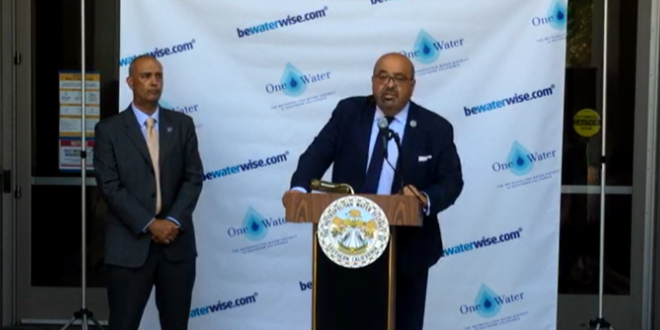The Bureau of Reclamation declared a water shortage on the Colorado River for the first time Monday, triggering mandatory cuts for states in the Southwest.
In a statement, Reclamation highlighted the severity of the drought and declining reservoir levels as the reason for reduced downstream releases from Glen Canyon Dam and Hoover Dam in 2022.
“Like much of the West, and across our connected basins, the Colorado River is facing unprecedented and accelerating challenges,” said Assistant Secretary for Water and Science Tanya Trujillo. The only way to address these challenges and climate change is to utilize the best available science and to work cooperatively across the landscapes and communities that rely on the Colorado River.”
Projections by Reclamation for Lake Powell’s January 1, 2022 elevation is 3,535.40 feet, about 165 feet below full and about 45 feet above the minimum power pool. As such, it will operate in the Mid-Elevation Release Tier and will release 7.48 million acre-feet in water year 2022 without the potential for a mid-year adjustment in April 2022.
Lake Mead on the other hand is much worse, with a projected elevation of 1,065 feet, about 9 feet below the Lower Basin shortage trigger of 1,075 feet and about 24 feet below the drought contingency plan trigger of 1,090 feet. This means Lake Mead will operate in its first-ever Level 1 Shortage Condition.
“Today’s announcement of a Level 1 Shortage Condition at Lake Mead underscores the value of the collaborative agreements we have in place with the seven basin states, Tribes, water users and Mexico in the management of water in the Colorado River Basin,” said Reclamation Deputy Commissioner Camille Touton. “While these agreements and actions have reduced the risk, we have not eliminated the potential for continued decline of these critically important reservoirs. Reclamation is committed to working with all of our partners in the basin and with Mexico in continuing to implement these agreements and the ongoing work ahead.”
The Level-1 Shortage will impact Arizona, Nevada and Mexico. California will not be immediately affected, but Reclamation officials warned that more cuts would likely be necessary.
“While California will not be required to contribute supplies to Lake Mead next year under the Drought Contingency Plan, this is a wake-up call that we need to strengthen our response to continued drought conditions,” said Adel Hagekhalil, general manager of the Metropolitan Water District of Southern California. “A further lowering of the reservoir could trigger a required contribution from Metropolitan in the near future. We are already at the table with our partners on the river exploring longer-term solutions to shared risks and vulnerabilities. The next chapter in the history of this river must be one of collaboration and historic action to stabilize a supply that is so vital to seven states and two countries.”
In response to the shortage declaration, the Board of Directors for Metropolitan voted Tuesday to move their water supply condition from a “Water Supply Watch” to a more severe “Water Supply Alert”.
A Water Supply Alert is the third of four conditions in Metropolitan’s framework indicating the urgency of the region’s need to save water. While, the resolution does not implement MWD’s Water Supply Allocation Plan, it does call for cities, counties, member agencies, and retail water agencies to implement “extraordinary conservation” through drought ordinances and other measures to mitigate the use of storage reserves.
“Every drop we save today is a drop we can use tomorrow,” said Hagekhalil. “and we need every drop if these conditions continue.”
 California Water News Daily Your Source For Water News in California
California Water News Daily Your Source For Water News in California


